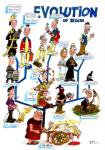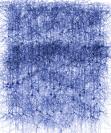
Taking a look at genetics topics today, and I am intrigued by what scientists are intrigued by and what gets them going - so here is some news that excites some geneticists.
According to a news release from
Georgia Tech, biologists there have "provided scientific support for a controversial hypothesis that has divided the fields of evolutionary genomics and evolutionary developmental biology, popularly known as 'evo devo," for two years. Appearing in
Trends in Genetics, researchers find that the size and complexity of a species’ genome is not an evolutionary adaptation per se, but can result as simply a consequence of a reduction in a species’ effective population size."
Scientists Soojin Yi says, “The interesting thing here is that biological complexity may passively evolve. We show that at the origins, it’s not adaptive mutations, but slightly bad ones that make the genome larger. But if you have a large genome, there is more genetic material to play with to make something useful. At first, maybe these mutations aren’t so good for your genome, but as they accumulate and conditions change through evolution, they could become more complex and more beneficial.”
Scientist J. Todd Streelman says, “As a general rule, more complex organisms, like humans, have larger genomes than less complex ones. You might think this means that animals with the largest genomes are the most complex – and for the most part that would be right. But it’s not always true. There are some species of frogs and some amoeba that have much larger genomes than humans.”
 I love words. An easy way to learn a new word each day is to sign up for Word of the Day on Google's new personalized home page. Here are some words from the past week. It would be great to hear these words used more often in our day-to-day speech, or at least see them in an email or two:
I love words. An easy way to learn a new word each day is to sign up for Word of the Day on Google's new personalized home page. Here are some words from the past week. It would be great to hear these words used more often in our day-to-day speech, or at least see them in an email or two:







